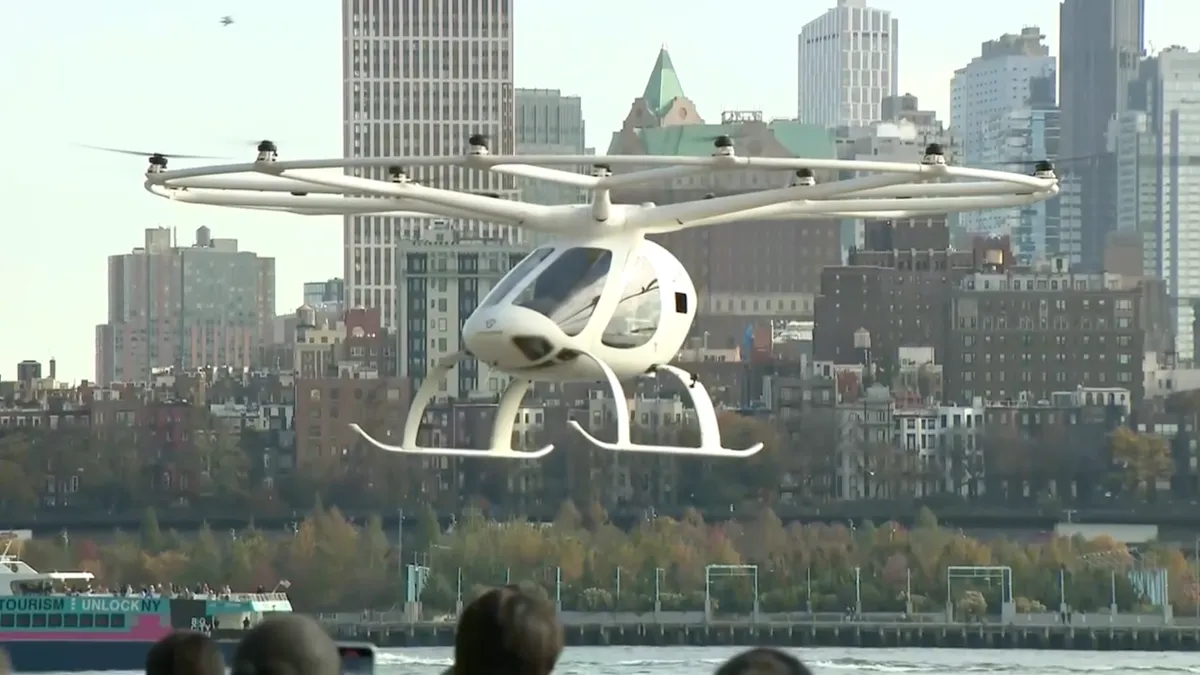Dive Brief:
- Vertiport construction and noise management face overlapping legal authority between the Federal Aviation Administration and state, local and tribal governments, according to a March 14 Government Accountability Office study, while other aspects of electric vertical takeoff and landing aircraft, also called air taxis, fall clearly into one jurisdiction or the other.
- Non-federal entities will likely take responsibility for zoning and permitting processes related to eVTOL ground-based infrastructure and may use local authority to set vertiport siting requirements to mitigate aircraft noise, the study says. Authority for the operation of eVTOL aircraft generally sits with the FAA.
- The study also identifies long-term issues that warrant consideration as air taxi and related advanced air mobility operations increase, such as regulations for anticipated pilotless, autonomous eVTOL aircraft.
Dive Insight:
Commercial air taxi operations are expected to take flight as soon as next year, with the FAA preparing for growing operations in multiple locations by 2028. Archer Aviation and United Airlines plan to operate air taxis in Chicago and the New York City area, while Joby Aviation and Delta Air Lines announced routes in New York and Los Angeles. Wisk Aero, a Boeing subsidiary, said it will bring pilotless air taxis to the greater Houston area as soon as 2030.
The FAA, as the federal agency responsible for the safety and efficiency of the nation’s airspace system, is responsible for certifying these new aircraft, developing training standards for pilots and mechanics and managing airspace requirements for urban air mobility operations. The agency has also issued interim guidance for vertiport designs and is reviewing its noise policy to address eVTOL operations.
Local authorities and state transportation departments may need to issue licenses or permits to establish and operate takeoff and landing facilities. Because eVTOLs operate on battery power, similar to electric vehicles, vertiports will need charging facilities. Stakeholders that GAO interviewed expressed concerns about the possibility of lithium-ion battery fires as well as the need for related emergency response procedures and firefighting techniques. Others raised questions about the costs, standards and availability of electrical infrastructure as well as annual costs for power and maintenance.
Regarding noise, while eVTOL developers say that their noise levels are significantly lower than helicopters, the GAO study says that state, local and tribal authorities could impose operating restrictions for takeoff and landing sites near schools or other noise-sensitive locations. “Laws traditionally related to state and local police power — such as land use, zoning, and law enforcement operations — generally are not subject to federal regulation, according to the FAA,” the report states.
The GAO report also noted that regulations will need to evolve as some of these aircraft advance to pilotless, autonomous flight.












